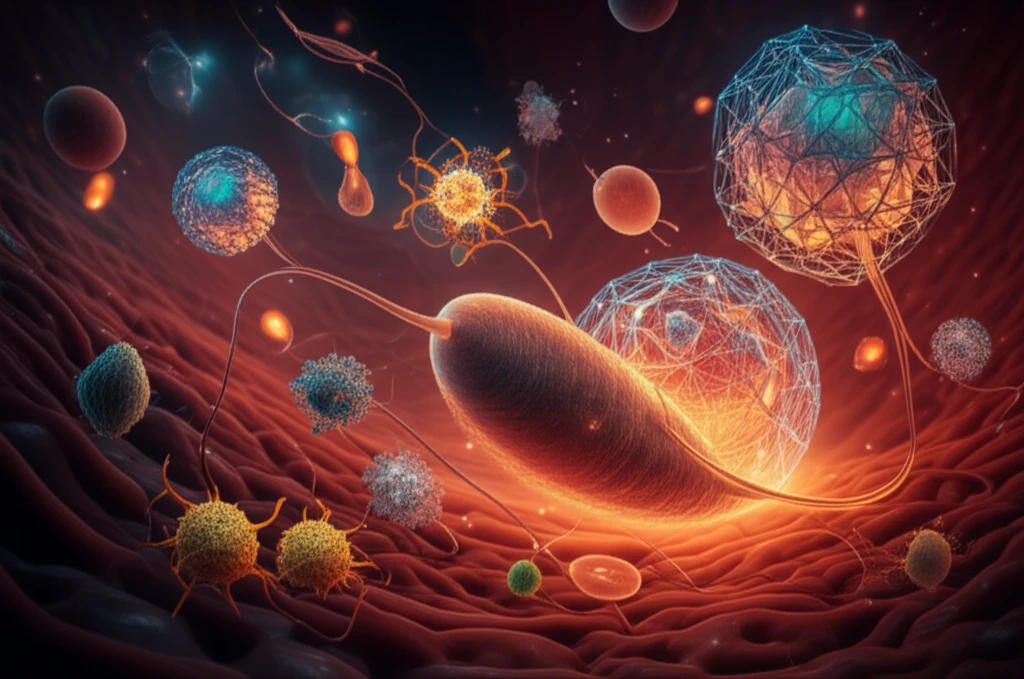
Liver Fluke Fasciolosis: Unveiling the Secrets of Parasite-Host Interaction
"A deep dive into how Fasciola gigantica manipulates the host's immune system, offering new targets for diagnosis and treatment."
Fasciolosis, a disease caused by the liver flukes Fasciola hepatica and Fasciola gigantica, poses a significant threat to livestock worldwide. These parasites, particularly impacting sheep and cattle, lead to substantial economic losses due to decreased productivity and increased mortality. Understanding how these parasites interact with their hosts is crucial for developing effective control strategies.
Recent research has focused on the excretory and secretory products (ESPs) released by these parasites. These ESPs play a vital role in modulating the host's immune response, allowing the parasite to evade detection and establish a long-term infection. Scientists are working to unravel the complex interplay between parasite ESPs and the host's immune system.
A new study has shed light on the specific proteins secreted by Fasciola gigantica during different stages of infection in buffaloes. By analyzing these proteins and their interaction with the host's serum, researchers have identified potential targets for new diagnostic tools and therapeutic interventions. This research marks a significant step forward in our fight against fasciolosis.
What are the Key Findings of the Fasciola gigantica Study?

The study involved infecting buffaloes with Fasciola gigantica and collecting serum samples at various intervals post-infection (42, 70, and 98 days). Researchers then used a technique called co-immunoprecipitation (Co-IP) to isolate the proteins from the parasite's ESPs that were interacting with the buffalo serum. These proteins were subsequently identified using liquid chromatography-tandem mass spectrometry (LC-MS/MS), a highly sensitive method for protein analysis.
- Cathepsin Family: Enzymes involved in breaking down proteins, likely playing a role in the parasite's invasion and feeding processes.
- Glutathione S-Transferase (GST): Proteins involved in detoxification and antioxidant defense, potentially helping the parasite cope with the host's immune response.
- Calcium-Binding Proteins: Proteins involved in various cellular processes, possibly contributing to the parasite's survival and reproduction.
What's Next? The Future of Fasciolosis Research
This research opens up exciting new avenues for combating fasciolosis. By identifying the key proteins involved in the parasite-host interaction, scientists can now focus on developing targeted interventions. These could include new diagnostic tests that detect the presence of specific parasite proteins in infected animals, as well as novel therapies that disrupt the parasite's ability to evade the host's immune system. Further research is needed to fully understand the function of these proteins and their potential as drug targets, but this study provides a strong foundation for future investigations.
